Let’s face it. Strength training is a monotonous activity most of the time. Sometimes you get tired of the exercises you’ve been doing. Your body needs a break. It demands variety.
I think that every fitness enthusiast who has been training for decent amount of time has been in such a situation. What to do? You can deal with it and grind through, but most of the time the simplest and most effective solution is to introduce some variety (at least for limited amount of time). But what if you have almost nothing at hand? Or what if you think you’ve already tried it all?
Here are nine unusual exercises that require minimum equipment and deliver maximum results:
1. Handstand
In my opinion, the handstand is the simplest and most beneficial exercise you can add to your current regimen. It doesn’t matter whether you train for strength, some kind of sport, or to be healthier, the handstand will still be effective. It builds strength and stability in shoulders and arms that no other exercise can match, as well as improves overall blood circulation. I’ve seen a huge increase in pressing power of anybody I forced to make the handstand a part of his or her strength training routine.
If that is not enough, just imagine how it is awesome to stand on your hands. In addition, there is only one thing that is cooler than the handstand – the one-arm handstand. And don’t forget that you can add push ups in this position to supercharge it even further.
Practical application: Start with doing two sets of back-to-wall handstand and two sets of the face-to-wall version three times per week. Once you will be able to hold both of them for thirty+ seconds, move to the wall-spotted variation and add kick-up-to-handstand practice. You’ll be able to hold freestanding version really soon after that.
2. Claw Fingertip Push Up
This exercise will build tremendous strength in fingers and grip, despite the fact that all you need is your bodyweight. What’s the difference between this drill and regular fingertip push ups? Look at the pictures. The first one is regular, and the second is claw.
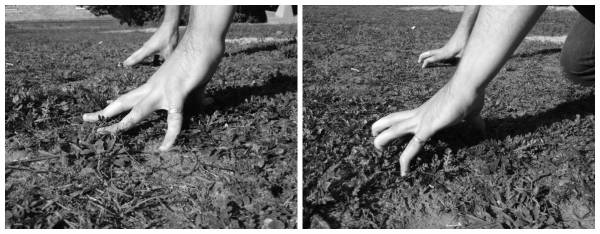
As you can see, the difference is in the last joint position of the fingers. This is exactly what makes it much harder. Some people say that this way fingertip push ups are healthier, which can be true. Watch this video for demonstration:
Practical application: You may find yourself falling flat on the floor after trying these for the first time. My advice would be to start slow. The first exercise I would try is claw fingertip holds from your knees. After being able to hold it for twenty+ seconds, you can try to add the push up in this position. Work up to the full version this way.
3. Double Kettlebell Snatch
This is probably the most technically demanding drill you can perform with two kettlebells. The double kettlebell snatch requires tremendous strength and explosiveness, as well as coordination and shoulder mobility. Of course, when performed with heavy weight (32kg kettlebells and heavier), it will also develop the lower back and forearms of steel, as well as a nice addition in the form of huge traps.
Practical application: First learn the double kettlebell high pull. Once you get proficient with that drills, all you need to do is to perform the high pull, squat under the kettlebells, and just catch them at the top. (Definitely easier said than done.)
4. Front Lever
The front lever works arms and back while torching your core. Many people think it is easy, but obviously, they are fooling themselves. You’ll need lots of time to master the skill with proper technique, especially if you are eighty+kg and tall.
Here are a few tips:
- Always perform this skill with your elbows locked. Otherwise, it is not a front lever.
- Use false grip while performing it.
- Don’t overdo it. If you want to train it more than two times per week, don’t go even close to failure.
There are several ways of progressing in this position. The most popular two are:
- Add assistance in form of resistance bands and decrease it as you get stronger
- Manipulate the leverage with different positions of the body.
The first one is clear. Put the resistance band on the bar and under your lower back. As you get stronger, use less assistance. Repeat it until you are able to hold the full front lever.
The second one is trickier. You should get stronger in the exercise chain, from the easiest to the hardest. Start with the tuck front lever (knees touching your chest), then train the advanced tuck version (the same, but lower back is straight), one-leg variation (the same as previous, but with one leg straight), straddle front lever (almost full version, but legs are spread wide) and finally the full front lever.
Another trick is to convert repetitions into time (as you’ll be holding it for time). My advice would be to start with the progression step that is suitable for you, and hold it for a total of 30-60 seconds (no matter how many sets it will take). You should be able to hold it at least 5-10 seconds at the first set.
If you can’t progress from one step to another, try adding ankle weights to the current position. This will make the transition smoother.
Practical application: Treat this exercise as any strength move. You can’t squat to failure every day with the same intensity, right? This applies to front lever training too.
5. Sandbag Shoulder Squat
You need to train your legs and this is one of the most interesting ways to do it. The fun part is in unevenness of the load, because you hold the sandbag only on one side. This gives a nice twist to the regular squatting and makes your core muscles work twice as hard. The sandbag shoulder squat can be a breath of fresh air when it comes to legwork.
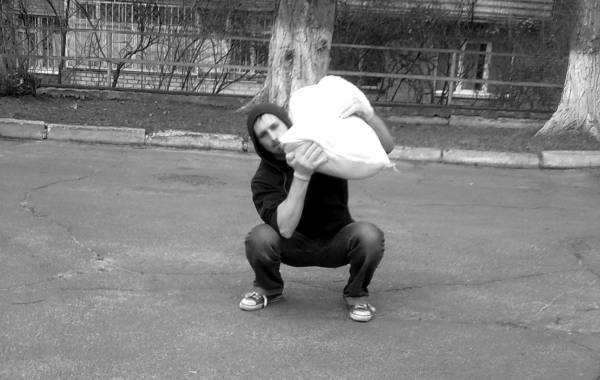
Practical application: Don’t forget to change sides. It would be wise to perform even numbers of sets to work both sides equally. I wouldn’t suggest going too high in reps, 5-10 should be just right.
6. Bottom-Up Kettlebell Press
Here is another great unconventional exercise to boost your grip strength. Just pick the kettlebell up, then clean and press it with its bottom up. As simple as that. But believe me, once the weight gets serious, you will struggle to perform even one rep.
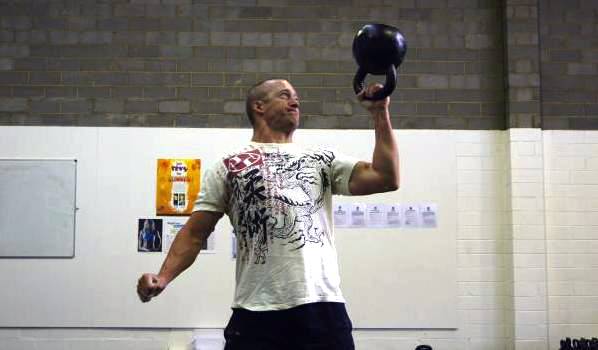
Practical application: I wouldn’t go higher than 10 reps in this exercise. However, it is all up to you. I do have a couple tips for you:
- Chalk your hands. This will help you big time.
- If you can’t press a certain weight right away, don’t get too upset. Work on the bottom-up clean first. It is less demanding than press. In addition, it will help you get stronger grip and get used to the weight.
7. Sandbag Zercher Carry
According to Dan John, you need to add some sort of loaded carry to your workouts or you will burn in hell (okay, the last part was from me). With all seriousness, if you don’t carry heavy stuff around, you are missing out. It is an essential way to train. It will develop everything in your body. To make you miserable and to get your biceps and traps begging for mercy, I advise you to carry a heavy sandbag in the Zercher position.
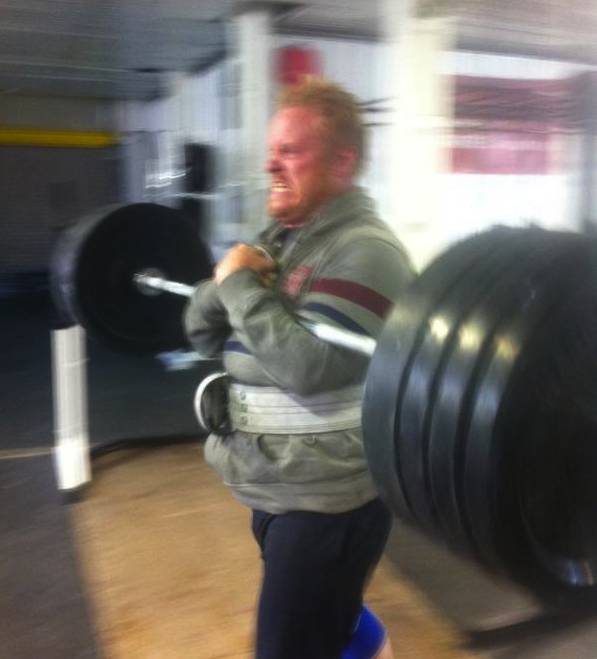
Practical application: I would start with one loaded carry per week right at the end of the workout. The goal would be to work up to two to three carries weekly.
8. Alternating Renegade Row
Rowing kettlebells in the push up position, what can be cooler? The exercise is simple and effective. It will work your pulling muscles as well as pushing ones. Additionally, if you perform it for high reps (at least eight in this case), you will feel it in your core. Once, when I was doing it this way with 32kg kettlebells, I thought that blood flew from my mouth. Luckily, it was just sweat. Anyway, I left with a cool story to tell.
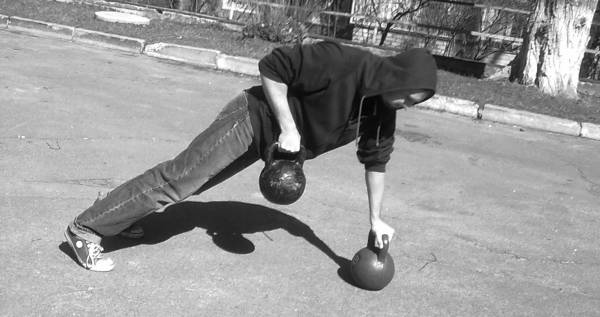
Practical application: If you do it for low reps (no more than six), then put it in place of any pulling movement in your program. If you do renegade rows for higher reps, I would place it in the end of workout like some sort of challenge.
9. Turkish Get-Up
The first time I learned about this exercise, I thought it was amazing. Being able to stand up with a pressed-up kettlebell is a great feat of full-body strength (especially if this kettlebell is heavy). Has my opinion changed since that time? No. I still believe that any person can benefit from this movement. It is somewhat technically demanding, but this should not stop you from acquiring this skill.
Practical application: Again, it all depends on what regimen you prefer to use the Turkish get up in. If you like to work with heavy kettlebells, you shouldn’t train this after heavy pressing. If you like to work on reps, then feel free to add this exercise at the end of any session.
Of course, this article is not a comprehensive guide to any of exercises above. It is just a highlight of what can be done to spice your workouts up. If you have any questions or thoughts regarding the topic, let’s chat in the comments below.
Photos 1,2,3, and 6 courtesy of Alex Zinchenko.
Photo 4 courtesy of Strength Education.
Photo 5 courtesy of Dragon Door Australia.






